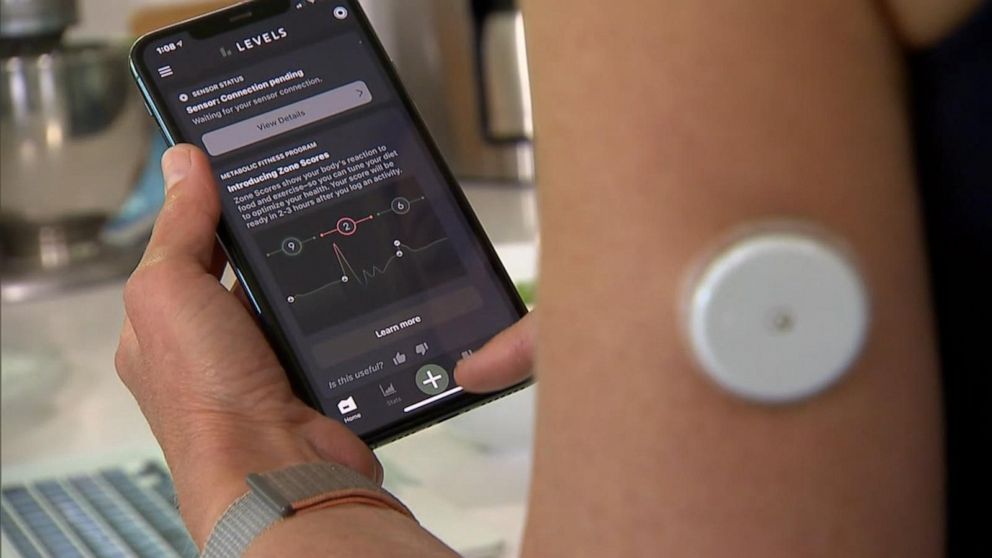People turn to glucose monitors to track their body's reaction to foods: What to know
ABC News' Becky Worley tried the Levels app to test her body's reaction to food.
People with diabetes rely on blood glucose devices to monitor their blood sugar levels, but now people who do not have diabetes are tapping into the technology.
People without diabetes are using the devices, via apps, to learn more about how their lifestyle habits, like diet and exercise, may be affecting their blood sugar levels too.
One product designed for people without diabetes, Levels, features two sensors worn on the skin for 14 days each.
The product, currently in beta testing, links to an app that displays the user's blood sugar level at all times so they can see how their body reacts to eating a bagel, for example, a food high in carbohydrates, versus a high-protein food like chicken.
ABC News' Becky Worley, who did a complimentary tryout of the Levels app, found that while tracking her meals with the app, proteins like chicken and boiled eggs kept her blood sugar level, while a salad dressing loaded with sugar did not.

"What makes [continuous glucose monitors] so effective is that they empower people to learn about their health in a way that wasn't possible before by seeing the impacts right away," said Dr. Aaron Neinstein, a California-based endocrinologist who is not associated with Levels and prescribes continuous glucose monitors to his patients with diabetes. "I think what a lot of people learn when they use continuous glucose monitoring is just how much unhealthy ingredients are hidden in foods that we don't know about."
Medical experts say steady blood sugar levels generally keep the body in a state of using food as fuel, but big spikes in blood sugar can stimulate the body to store fat, increase your risk of heart disease and spur chronic inflammation.
Keeping blood sugar levels in range as much as possible can help delay or prevent health problems like heart disease, vision loss and kidney disease, and can help boost energy and mood, according to the U.S. Centers for Disease Control and Prevention (CDC).
Some of the keys to balancing blood sugar levels include avoiding processed foods, eating more protein, adding healthy fats like avocado, olive oil and nuts and even walking after big meals.
"When you're exercising, your body is able to bring glucose or sugar into the cells without insulin," Neinstein, also an associate professor in the University of California San Francisco division of endocrinology, told "GMA." "So it is a very effective tool."
While several continuous glucose monitors are approved by the Food and Drug Administration for use by people with diabetes, the Levels app is currently not FDA-regulated.
The company told ABC News that doctors routinely prescribe drugs and devices intended for other uses they think can help patients, but state in their terms of service, "We do not warrant that the results that may be obtained from the use of the service will be accurate or reliable."
Neinstein said there is more data needed, stating, "Mu" h more research is needed to help us understand what the risks and benefits might be for people who don't have diabetes."
"






